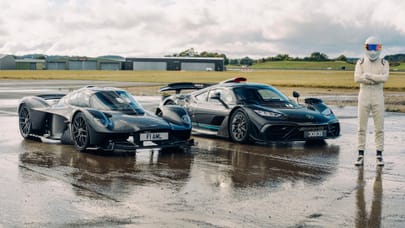
Is car design dead or is it simply hibernating?
TG's Paul Horrell investigates the evolution of car design
Remember “the end of history”? That coinage, and early Nineties book that sprung from it, was by Stanford political scientist Francis Fukuyama. We stood amid the fall of the Berlin Wall, the breakdown of the Soviet Union, the beginnings of capitalism in China and the release of Nelson Mandela. Communism was in retreat, ultra-nationalism too. It seemed like the great battles of ideas had finally been played out. Instead, we’d be living in a world of broadly democratic governments peacefully tweaking the levers of economic activity, in order to ramp up their populations’ wealth, education and ability to buy ever-more elaborate video cassette recorders.
Life in motoring magazines during the era was eerily similar. The evolution of the car certainly hadn’t stopped, but it had arrived from all sides onto a tediously convergent path. The template had become staggeringly entrenched: a transverse engine, front-drive, hatchback body – or maybe a saloon if you were American or Japanese. VW applied the formula from the Polo to the B3 Passat, Rover from the Metro to the 827, GM from the Vauxhall Nova to boats like the Olds Cutlass Supreme, Ford from the Fiesta to the Taurus, Nissan from the Micra to the Maxima. Yawn.
OK, the Germans persisted with rear-drive, but they still had tiny car ranges – three sizes of Mercedes saloon, three of BMW, plus related coupes, an occasional sports car and an estate each. The Americans and Aussies too did RWD. SUVs were a minority interest, just better-upholstered farm trucks really. So, yeah, we’d reached the end of history, and it looked like many sizes of Golf.
A quarter-century on, Fukuyama’s sound bite hasn’t stood. Try telling Daesh that western liberal democracy is the default condition.
And in our little world of the automobile, the early Nineties’ stultifying convergence of evolution has now blossomed into staggering diversity. Renault invented the Scenic, and lo for a decade the world was full of handy-sized people carriers. Toyota brought us the RAV4 and crossovers became absolutely rampant. Mercedes had something it called the “model offensive” which brought a vast increase in its range from the A-Class to R-Class – a truly offensive model. Of course, BMW and Audi had to follow.
So we ended up with more body styles than we know what to do with. That’s before we start to think about propulsion. The early Nineties was a distant time when a diesel you’d enjoy driving (the E36 BMW 325tds) was a thing of novelty and wonder. The hybrid was no more than a futuristic doodle in some Toyota engineer’s margin.
In 2008, I was asked to write a fairly detailed study for “the car of 2030”. I interviewed car-company R&D chiefs, safety researchers, university boffins and the legislative community. They predicted that electric cars wouldn’t be mature by 2030 – at least not for long-distance use because battery capacity would likely not be up to it, and recharging would be too slow to carry on the journey. Yeah right. Just five years in, Tesla shattered both those assumptions. Neither was there any expectation of autonomous driving. And yet it seems that by 2020, a 12-year time frame not 22 years, self-driving cars will be commonish. Things are changing fast, but progress isn’t linear. It goes in fits and starts, in unexpected directions.
The other day, I was chatting with Gilles Vidal, Peugeot’s design boss. He said right now we’re arriving at what he calls the “end of aesthetics” in cars. He wasn’t about to talk himself out of a job by saying designers are redundant. Instead he says car design will be about “the entire experience”, not just the physical shapes of the exterior and interior. What matters will be the interfaces, the HMI, the way apps and comms are executed. The way we interact with cars in an era of sharing. Design will be in effect a collaboration between drivers and the company’s designers, because we’ll be able to configure so much for ourselves – how the car drives, how we control it and even (thanks to one-off 3d printing) its actual physical shapes and textures.
Vidal said (and he’s not the first senior industry person to claim as much), “In the Nineties we thought it was all over for car design. Actually, the coming few years will see more change than in the car’s whole history before.” History didn’t end in the Nineties. It merely paused for breath.
This article was originally published in issue 283 of Top Gear magazine
Top Gear
Newsletter
Thank you for subscribing to our newsletter. Look out for your regular round-up of news, reviews and offers in your inbox.
Get all the latest news, reviews and exclusives, direct to your inbox.
Trending this week
- Car Review
BMW 1 Series








